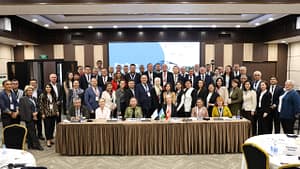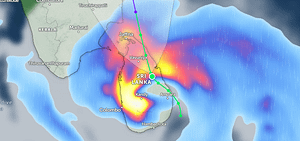Background
Since the early 1980s, the Indian Watershed Development (WSD) programs in rainfed dryland agriculture have been developed and implemented at micro-watershed scale (average size about 500ha) aiming to ensure the sustainability of the surface and groundwater resources and to improve the livelihoods of farmers.
From Wani’s national WSD evaluation (Wani et al. 2008), it has become apparent that the effects of water retention (e.g. surface water diversion, groundwater pumping) in micro-watersheds is likely to negatively affect downstream access to water and have an impact on water resources sustainability and farmer livelihoods.
Thus the issue of scale has become paramount for the effective evaluation of the WSD program. While terms vary from state to state, the following definitions have been adopted for this study and are deemed appropriate for Andhra Pradesh after discussions with the Department of Rural Development:
- Micro scale-less than 1500 hectares
- Meso scale 1500-10000 hectares
- Macro Level over 10000 hectares (including basin level investigations).
There is a need for a meso-scale benefit and cost evaluation of the WSD programs so that unintended impacts are avoided and that the implementation of programs is improved. Operating at a meso-scale will also provide more effective opportunities to link and address micro and macro scale biophysical and institutional issues. This project will integrate environmental, economic, social and equity dimensions at meso levels to help ensure that WSD contributes positively to the Indian government’s sustainable livelihoods goal and provide the foundations for a resilient and sustainable WSD.
Success will not only be determined by spatial scales (e.g. micro versus meso) but will also be determined by the disciplinary scale of analysis (e.g. focusing on short term economic efficiency alone runs considerable risk of ignoring longer term trends in natural and social capital).
The Research Questions
- What is the relationship between the scale of delivery of WSD (Watershed Development) on land use, productivity, livelihoods, equity between locations, sustainability of water resources and resilience of communities?.
- How can the appropriate scales for hydrology, livelihoods outcomes, equity and resilience be integrated in a single systems model for evaluation?
Methods
- Develop integrated evaluation model
- Develop appropriate surface water, groundwater and surface water groundwater interactions models
- Confirm five capital model of livelihoods
- Apply survey and focus group assessments of equity and resilience
Location
Six villages in two hydrological units (HUNS) in Anantapur and Prakasam Districts have been chosen for study (Fig.1 and Fig. 2). These villages undergo WSD activities at micro level and the farmers are aware of ground water management with the techniques learned from the recently concluded project on AP Farmers Managed Groundwater System. Two villages in adjoining HUNS where there are no WSD activities have been chosen as controls. A further villages with both upstream and downstream characteristics has also been for investigation.
Site-1:
District: Anantapur/Kurnool
Hydrology Unit: Vajrala Vanka and Maruva Vanka
Villages Selected: Rangapuram, Utakallu, Basinepalli

Fig. 1. Location of Study Sites selected in Anantapur/Kurnool Districts
Site-2:
District: Prakasam
Hydrology Unit: Peeturu Vagu
Villages Selected: Taticherla, Penchikalapadu, Vendutla

Fig. 2. Location of Study Sites selected in Prakasam District












